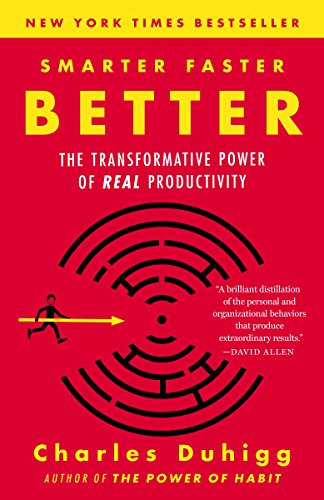‘Go with your gut!’
That’s something that we’ve always been taught, right? But what if we told you there’s another way? Leading an organization solely but gut feeling is a sure-fire way to run it into the ground if your instincts lead you astray. They’re not infallible. But what is almost concrete-like in its effectiveness? Data.
Welcome to Snapreads! Today, we’re bringing you how to implement data-driven decision-making in your organization. Let’s dive right in!
Data-driven decision-making is known as DDDM for short, or as information-based decision-making. And if that’s the leading strategy you think is best, you’re in the right place.
How do you put such a strategy in place?
Well, first things first; you want to collect information to analyze patterns and trends. To improve the future, you need to study the past. By doing so, you’re bypassing a certain risk factor.

Smarter Faster Better
by Charles Duhigg
⏱ 15 minutes reading time
🎧 Audio version available
Learn from Mistakes
Risk will always be there; that’s the deal with businesses. But make it a zero-sum game instead, how about that? A win-win. Making choices based on data is learning from your successes– and also your mistakes. That’s why we called it a zero-sum game. Just because one aspect won doesn’t mean that the other lost. You’re gaining something precious. Knowledge.
Place Objectives
Data-driven decisions are all about logic and precision. Therefore, the first thing you want to do is sit down with your laptop and identify your objectives from this strategy.
Identify your company’s short and long-term goals. What do you hope to specifically gain from this change in strategy? Do you want more traffic to your website? Want to increase sales? Expand your organization?
Find the Relevant Data
Okay, so the objective is in place. What’s next? Roll up your sleeves and get ready to immerse yourself in some deep data searching and organizing. Find the facts, metrics, and charts that are relevant to your goals.
Keyword: relevant. Studying data can be a long journey, so you don’t want to stray too far or spend hours down the wrong spiral.
Easier said than done, right? Here’s a trick to only gathering the data that relate to your goals. You can find the data you need from website analytics, CRM software, which stands for ‘customer relationship management,’ and custom feedback.
Set an Action Plan
Now that the pieces are in place, it’s time to act. With the data, spread sheets, and all in front of you, study them and their patterns to work out the kinks.
You noticed X-marketing campaign reaching a specific audience and not others. Or you notice that a certain product performs better than the others, or some products sell better during certain seasons, et cetera.
See, you are already gaining a deeper understanding of your organization. The next action you make will now be based on logic and data.
And when you invite the rest of your team to implement this strategy alongside you, from HR to sales managers, everyone will be better equipped to make better decisions.
Here’s what you can stand to gain from this: cost-effectiveness, better relationships with your customers, and a new edge over your competition.
What Is Snapreads?

With the Snapreads app, you get the key insights from the best nonfiction books in minutes, not hours or days. Our experts transform these books into quick, memorable, easy-to-understand insights you can read when you have the time or listen to them on the go.


